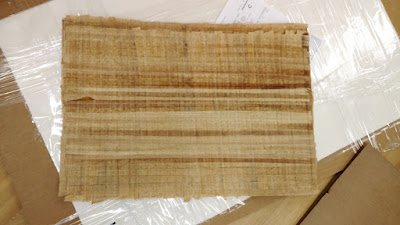Scroll for the Letter B
I made Scroll for the Letter C differently by perusing the dictionary in search of all the words beginning with C that I didn't know. I wrote down page after page of them! Now these words may be familiar to many people, but they weren't to me, so this scroll contains most of those words. What a fascinating exercise...in finding the words, reading their definitions and then transcribing them onto the scroll. I felt like a medieval scribe....given my penchant for tedious monotonous mark making, I probably would have been suited for such a life. Anyway, I broke up the long expanse of the scroll with a series of illustrations from the dictionary and then hand wrote the words, using a red pen for each initial C. I know the scroll would be much more refined if I was a calligrapher, but alas.....it has a nice, rustic feel that suits the teabag background.
As I was making this scroll, it dawned on me that I could be using a material more suited to the history of the scroll....papyrus! You can read more about papyrus here, but it is the material that scrolls were originally made from in ancient Egypt. Layers of the pith of the papyrus plant are compressed together to form the material known as papyrus. I've just purchased some from Dick Blick, which I unpacked it this morning, along with another parcel of Japanese paper.
It's quite rough and textured, not surprisingly....but also seems fragile and like it could crack if rolled tightly, so I'm a bit intimidated. Have any of you, dear readers, ever worked with papyrus? If so, would love to hear from you with any tips you've learned. I'll just have to take the plunge and experiment. If the ancients could use papyrus for centuries as the material to pass down knowledge through the form of the scroll, well surely I can figure out how to use it in my art making practice. Let the exploration begin!
Enjoy the rest of your week!







No comments:
Post a Comment
I'm happy to hear from you...comments and questions are welcome!